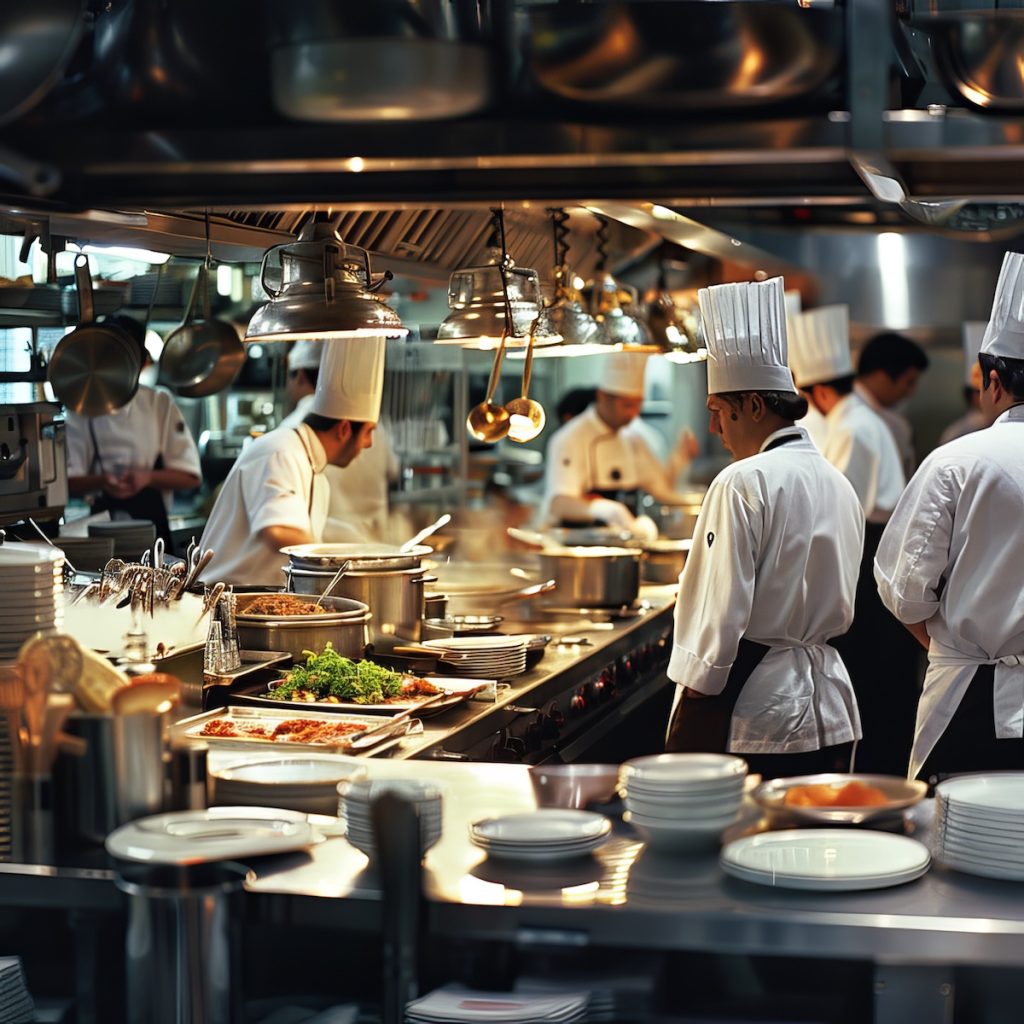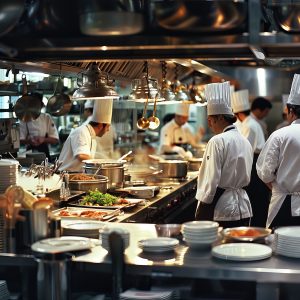A Must Read If You are Thinking of Going To Culinary School
The rest of the kitchen. Think about the last time you dined out. What would you say stands out most? Was it the fantastic or terrible food deciding whether you’d return? Or maybe it was the service. Was your waiter friendly, helpful, and knowledgeable, or did they treat you as just another table?
These questions seem straightforward, and the answers often are. But have you ever considered what goes into the plate placed before you? Have you thought about the labor behind creating just one meal?
It all starts at the restaurant’s back door, where delivery trucks unload fresh ingredients each morning. Chefs, especially at independent restaurants, inventory perishable items like meat, seafood, dairy, and produce daily. Unlike chain restaurants with central suppliers, these chefs order smaller quantities to ensure freshness and take advantage of seasonal produce.
Seasonal ingredients—think pumpkins in fall or strawberries in summer—allow chefs to craft exciting, fresh menus year-round. But ordering is just the beginning.
The chef oversees it all. They manage employee training, menu development, budgeting, and even the restaurant’s atmosphere. A great chef doesn’t just cook—they organize, delegate, and lead. That’s where the sous chef comes in. Working closely with the executive chef, they ensure every dish meets standards and every kitchen corner stays clean and safe.
Behind every plate lies incredible effort and teamwork.
Then There are the Prep Cooks & Line Cooks
Once the food is received and stored, prep cooks get to work, transforming raw ingredients into usable components. They peel potatoes by the case, cook massive stockpots of soup, and cut sides of beef into steaks. They operate as the restaurant’s engine, tirelessly preparing the base ingredients chefs and line cooks rely on every day. While tasks vary by restaurant, prep cooks typically handle bulk ingredients rather than individual portions.
Next, the line cooks step in. They begin each shift by gathering everything they’ll need. For many, their station is sacred territory. Stealing a line cook’s mise en place is as unthinkable as walking into someone’s home and taking their stereo.
For these cooks, the kitchen isn’t just a workplace—it’s a way of life. There are no office meetings, consumer surveys, or casual dress Fridays. Instead, their language reflects the intensity of their world. A busy night means they’re “ready for war,” standing “in the line of fire” from open to close.
Line cooks bridge the gap between prep and service. They portion sauces, stock vegetables and starches, and prepare meats and seafood for dinner service. Their stations are meticulously organized, stocked with tongs, knives, oils, and seasonings. These tools become extensions of themselves, fiercely guarded. Fights over broken kitchen etiquette aren’t uncommon and can escalate quickly. In this high-pressure environment, precision and respect are everything.
Talk About Multitasking
While the term multitasking has become prevalent in today’s society, most people think in terms of information analysis; the ability to focus on, all at once, email, conference calls, colleagues’ and subordinates’ progress, and any number of distractions present in the office.
On the line, however, this word takes on an entirely different meaning. Each cook is responsible for creating any number of entrees, appetizers, salads, and/or desserts flawlessly over and over again.
Herein lies a craft unknown to the majority of Americans in the workforce today—the physical reproduction of a highly perishable product 50-60 times a day, all the while having to take into account the taste, texture, and visual appeal of each dish.
The art and craft of professional cooking is a technique learned and mastered over a lifetime. It involves a constantly changing lineup of raw products served to a fickle and demanding clientele. Not only does the dish need to be executed in a timely manner, with incredible attention to detail each time but each individual cook (or station chef) must choreograph his efforts with everyone else in the kitchen.
What it all entails!
Just for a minute, really think about what this entails. The server must know when to tell the cooks what to fire, which, through the rise of technology and computers, has become easier and more efficient in the last decade. However, the lead chef, or expediter, must know how to read the tickets and time each dish so that your well-done pork chop finishes at the same time as your brother’s rare steak and your aunt’s summer salad.
All of this, in turn, must be spaced so that you have ample time to finish your appetizer and so that your dessert is not prepared and at your table halfway through your dinner. All of this work is just for your table, and think, you are only one table, in one server’s station out of all the people coming to dine in one evening.
Let’s take a moment and return to the kitchen, where the cooks are preparing your pork chop.
The person on the grill can cook upwards of two dozen steaks, chops, chicken breasts, and cuts of fish at once at any time (depending on the size of the restaurant). All of these have to be done to a specific temperature, following strict federal sanitation regulations, and with a mind for presentation each and every time.
He is also more than likely working about a foot and a half away from the sauté cook, who is busy trying to remember how many of each type of pasta he has worked. All the while, he is getting orders for baked fish, shellfish Diavlo, and veal Parmesan. He is working in a 110-degree environment, surrounded by boiling oil, open flames, razor-sharp knives, and three or four other people scrambling to get all manner of things done.
“I know I ordered this medium rare, but…”
Not many people really stop to think about all this when they say to a waiter, “I know I ordered this medium rare, but it’s a little bloody. Can you send it back to be cooked Well Done?”
In a business where dinners are served at a tempo of more than 100 an hour, any bump in the road, a dropped call, an over- or undercooked cut of meat, or a scorched sauce can bring the entire operation to a screeching halt. This is partially why cooks get a bad reputation for being temperamental, moody, and high-strung.
When someone spends their shift depending on others to be as prepared, well-trained, competent, and efficient as they are, it’s understandable that there is a little tension from time to time. Still, when all is in order, and the ship runs smoothly, there is nothing quite like being part of a team that provides a service to consumers unlike any other known today.
Although they walk tough and talk tough, people who work in the culinary industry are people-pleasers. No one wants more than to hear a compliment from a table that the food was excellent and the dinner as a whole was fantastic. (Well, ok, perhaps a bigger paycheck and a few more days off, but that’s getting a little off track…)
Chefs across the country and worldwide do what they do because they have a passion for food, a desire to express themselves quite literally through their work, and a desire to have as many people as possible enjoy the fruits of their labor.
If you like this article and want to read my interview with Alan, visit my Novice to Pro Interview with Chef Alan Bickel.
By: Chef Alan Bickel
















2 Responses
I loved reading this article!…a very good intro to the behind-the-scenes action of the professional kitchen. Its amazing how each position supports the others in creating the final plated product. Thanks for the article!
I like the article